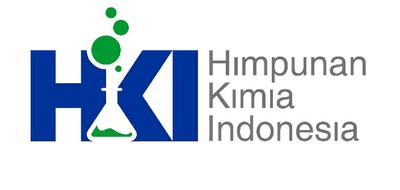HKI : Himpunan Kimia Indonesia, Wadah menyatukan para Kimiawan di segala Bidang
Peran Kimiawan tak bisa dielakkan dari pembangunan indonesia dewasa ini. para praktisi industri mau tak mau harus memakai jasa para kimiawan untuk tenaga laboratorium ataupun lainnya. HKI merupakan wadah yang tepat guna menyatukan segala pemikiran para scientist-scientist kimia di seluruh Indonesia
Trip To Jakarta
First Coordination meeting of Indofood Asahi QA Team. For 2 years, finally i landed again in Soekarno Hatta International Airport
My First Book - Panzerkorps (1939 - 1945)
Finally, our book project in a recent year has finished. Thanks to nulisbuku.com for published it. Glad to see it and face the future book project
Indofood CBP Asahi QA Team
With our fellow QA team of Indofood CBP Asahi Beverage Division at Indofood Tower
#TipsAndroid, our #2 book
Our #2 book published by nulisbuku.com, thanks for published our book 2 times. i'm confident my #3 books is'nt indie book again.
Thursday 16 May 2013
Jersey Training Real Madrid 2012/2013 KW Thai All Size
Material : Dri Fit / Polyster
Size : (Length x Width) Toleransi 2cm
All Size - 71 x 51
Rp. 140.000 (include ongkir)
minat? pm to : Pras 087754605664/085749282345
PDF Modern Liquid Chromatography
Introduction To Modern Liquid Chromatography - Part 1
has not moved smoothly upward from year to year. Rather the history of chromatography is, one of periodic upward spurts that have followed some major innovation: partition and paper chromatography in the 1940s, gas and thinlayer chromatography in the 1950s, and the various gel or size-exclusion methods in the early 1960s. A few years later it was possible to foresee still another of those major developments that would revolutionize the practice of chromatography: a technique that we call modern liquid chromatography.
What do we mean by "modern liquid chromatography"? Liquid chromatography (LC) refers to any chromatographic procedure in which the moving phase is a liquid, in contrast to the moving gas phase of gas chromatography. Traditional column chromatography (whether adsorption, partition, or ion-exchange),
thin-layer and paper chromatography, and modern LC are each examples of liquid chromatography. The difference between modern LC and these older procedures involves improvements in equipment, materials, technique, and the application of theory. In terms of results, modern LC offers major advantages in
convenience, accuracy, speed, and the ability to carry out difficult separations.
To appreciate the unique value of modern LC it will help to draw two comparisons:
• Liquid versus gas chromatography.
• Modern versus traditional LC procedures.
1.1 LIQUID VERSUS GAS CHROMATOGRAPHY
The tremendous ability of gas chromatography (GC) to separate and analyze
complex mixtures is now widely appreciated. Compared to previous chromatographic
methods, GC provided separations that were both faster and better.
Moreover, automatic equipment for GC was soon available for convenient, unattended
operation. However, many samples simply cannot be handled by GC.
Either they are insufficiently volatile and cannot pass through the column, or
they are thermally unstable and decompose under the conditions of separation.
It has been estimated that only 20% of known organic compounds can be satisfactorily
separated by GC, without prior chemical modification of the sample.
LC, on the other hand, is not limited by sample volatility or thermal stability.
Thus, LC is ideally suited for the separation of macromolecules and ionic species
of biomedical interest, labile natural products, and a wide variety of other highmolecular-
weight and/or less stable compounds, such as the following:
Proteins Polysaccharides Synthetic polymers
Nucleic acids Plant pigments Surfactants
Amino acids Polar lipids Pharmaceuticals
Dyes Explosives Plant and animal metabolites
Liquid chromatography enjoys certain other advantages with respect to GC.
Very difficult separations are often more readily achieved by liquid than by gas
chromatography, because of
• Two chromatographic phases in LC for selective interaction with sample
molecules, versus only one in GC.
• A greater variety of unique column packings (stationary phases) in. LC.
• Lower separation temperatures in LC.
Chromatographic separation is the result of specific interactions between sample
molecules and the stationary and moving phases. These interactions are essentially
absent in the moving gas phase of GC, but they are present in the liquid
phase of LC - thus providing an additional variable for controlling and improving separation. A greater variety of fundamentally different stationary phases have
been found useful in LC, which again allows a wider variation of these selective
interactions and greater possibilities for separation. Finally, chromatographic
separation is generally enhanced as the temperature is lowered, because intermolecular
interactions then become more effective. This favors procedures such
as LC that are usually carried out at ambient temperature.
Liquid chromatography also offers a number of unique detectors that have so
far found limited application in GC:
• Colorimeters combined with color-forming reactions of separated sample
components.
• Amperometric (electrochemical) detectors.
• Refractive index detectors.
• UV-visible absorption and fluorescent detectors.
Although GC detectors are generally more sensitive and also provide unique selectivity
for many sample types, in many applications the available LC detectors
show to advantage. That is, LC detectors are favored for some samples, whereas
GC detectors are better for others.
A final advantage of liquid versus gas chromatography is the relative ease of
sample recovery. Separated fractions are easily collected in LC, simply by
placing an open vessel at the end of the column. Recovery is quantitative and
separated sample components are readily isolated, for identification by supplementary
techniques or other use. The recovery of separated sample bands in GC
is also possible but is generally less convenient and quantitative.


















